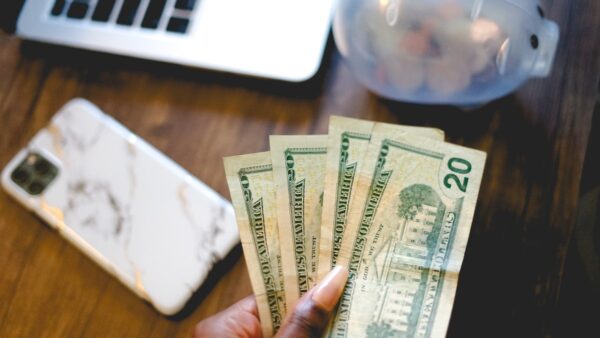Saving money is a stereotypical New Year’s resolution, but with a potential recession on the horizon, now is the time to set aside an emergency savings fund.
A 2021 survey conducted by personal finance website Bankrate found that more than half, 51 percent, of Americans have less than three months’ worth of emergency savings. In January 2022, another Bankrate survey found that 56 percent of people could not cover an emergency expense of $1,000.

“Emergency savings and the $1,000 threshold are really an indication of how much people are struggling, that they are that close to the edge financially,” Greg McBride, senior vice president and chief financial analyst at Bankrate, told CNBC.
Although the SSRS Omnibus-backed survey that took place between June 22-27, 2021, does not indicate race, it highlights that “Individuals who earned under $30,000 a year were more than 3.5 times likely to have less savings (47 percent) than more (13 percent).”
A 2022 Pew Research Center survey, however, shows that most Black adults do not have an emergency fund. The survey indicates that many Black people typically live day-to-day, making the minimal extra money for auxiliary uses; just 36 percent of Black people say they have emergency savings in the occurrence that sickness, job loss, or an economic downturn would affect them.
Personal finance expert Suze Orman says it is a must at this time to have an emergency fund, CNBC reported.
“The majority of Americans, in my opinion, barely have the money today to pay for their everyday expenses,” Orman said.
What is an Emergency Fund?
The difference between a regular savings account and an emergency fund is that the latter is designed to combat unexpected financial needs, such as a house fire or sudden employment loss. A normal savings accounts is for simple and fully realized budget planning like a college fund or vacation trip, according to Union Bank and Trust.
As Forbes describes, it is a general rule to save up between three and six months of basic living expenses into one’s emergency fund, starting with at least $1,000.
How to Set Up an Emergency Fund
The emergency funds should ideally be created in a separate and additional savings account. Setting up automatic transfers from one’s checking to savings each payday, or having part of your paycheck sent to savings via direct deposit, the money should be untouched, and any extra money goes directly into the emergency fund.
Savings Tips
In order to set aside money for an emergency fund, you will need to increase the money you save each month. Here are a few tips:
1. Set an emergency fund goal: Calculating what your household needs for such necessities housing, transportation and food in case of an emergency. The average household spends an average of $3,490 on such necessities, according to a 2021 survey by the U.S. Bureau of Labor Statistics. If this is your average, then your three-month emergency fund goal should be around $10,470.
2. Reassess your day-to-day expenses: Paying attention to daily expenses and budgeting accordingly can save money, which is why people might want to consider getting a financial planner or financial adviser to help track their habits. About one in four Americans has a financial adviser, and those surveyed said their advisers led them to have better financial situations, including better financial security, more confidence in their ability to pay down debts, and higher expectations about their ability to retire comfortably one day than those without financial advisors, USA Today reported. If you want to go it on your own, there are resources such as the Clever Fox Budget Planner.
3. Get lower interest rate on credit cards: Reducing one’s annual percentage rate saves tons of dollars, because credit card accounts carrying a balance with a high APR will owe hundreds. The less one owes, the more one can save, and whatever saved can be set aside in the emergency fund. Compare rates from available credit cards to the ones in your possession, and see which card offers a better rate. By calling the credit card company and asking for lower rate, holders can reduce as much as 6 percentage points, according to Business Insider. CNET reported that some people could negotiate with credit card companies and ask for lower rates, and even if one does not immediately get a lower rate, one’s can ask for temporary lower rates and/or better benefits.




